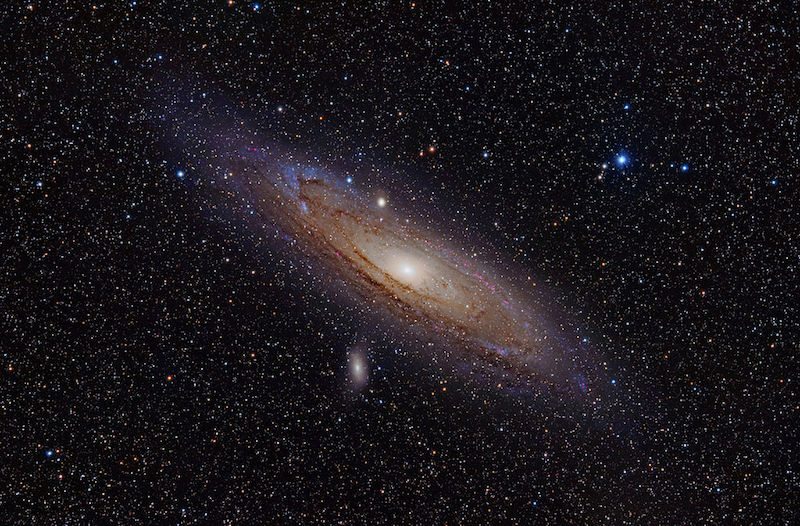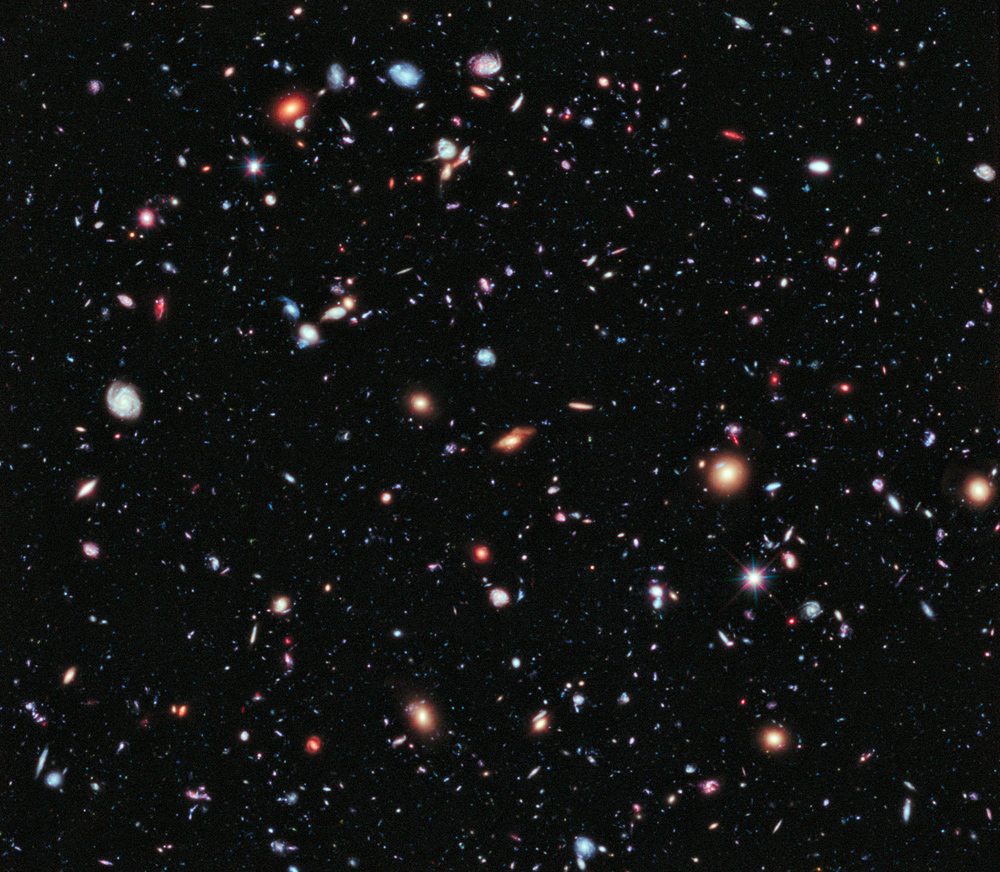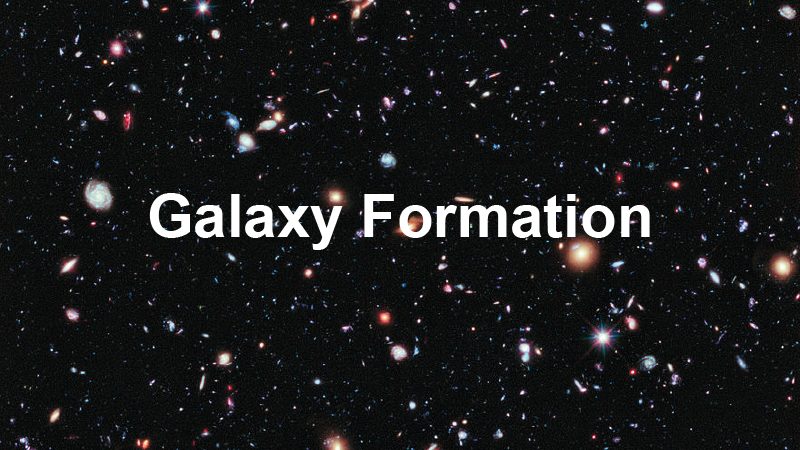Galaxy Formation
Episode #8 of the course A short history of the universe
When you look out at the night sky, all of the stars that you can see are within our galaxy, a spinning collection of a hundred billion stars in which we live. The river of milky light that you see stretching across the sky, the Milky Way, is the rest of our galaxy seen edge-on from our own location about one third of the way out from the center in one of its spiral arms.
Perhaps the greatest discovery of 20th-century astronomy, based on the work of Edwin Hubble, was the sighting of billions of other galaxies in every direction. Truly unimaginable numbers of worlds at unimaginable distances! It is actually possible to see a few of the galaxies closest to our own with the naked eye—for example, the Magellanic clouds, which are being eaten up by our own galaxy, and the Andromeda galaxy only a few hundred thousand light years away from us.

The Andromeda Galaxy
Scientists do not have a very good idea of the details of galaxy formation yet. We can see galaxies out there at different stages of development, and we see them colliding here and there. But the earliest galaxies we can see, 13 billion light years away, are surprisingly large already. Of course, we wouldn’t be able to see baby galaxies that far away because they’re just not bright enough.
We are confident that the seeds of galaxy formation were the very tiny irregularities in the distribution of matter in the earliest universe, which started as “quantum fluctuations” in the Big Bang and became stretched out to a cosmic scale by the rapid expansion of the universe.
What we don’t know is whether stars, galaxies, clusters of galaxies, or even super-clusters formed first. Stars might have formed, then gathered together into galaxies and larger structures from the bottom up. Or the clouds of gas that became the largest structures in the universe could have formed first, and then smaller and smaller structures formed within them. Which way it happened depends a lot on the properties of dark matter, which we know so little about, because it was mainly the gravity of dark matter that pulled these structures together.

Astronomers using the Hubble Space Telescope have captured the most comprehensive picture ever assembled of the evolving Universe — and one of the most colourful. The study is called the Ultraviolet Coverage of the Hubble Ultra Deep Field (UVUDF) project.
Credit: NASA, ESA, H. Teplitz and M. Rafelski (IPAC/Caltech), A. Koekemoer (STScI), R. Windhorst (Arizona State University), and Z. Levay (STScI)
Recent computer simulations of this billion-years process show beautiful and complex dynamics, with globs of matter falling past and through each other, orbiting and merging, heating up more and more, and gradually settling into the universe-spanning ribbons and walls of galaxies that we can see today.
One remarkable 20th-century discovery is that most galaxies have a great engine of destruction at their core—a super massive black hole. Black holes form when large enough stars run out of fuel and collapse under their own gravity in incredible explosions called supernovae. But the black holes at the centers of galaxies are much larger, formed from the merging of many black holes where the stars are densest. These black holes do not merely eat matter. They also put out more energy than anything else in the universe, because stars and other objects are sucked into them at incredible speeds, burning up and releasing energy as they do so.
Recommended book
“Death by Black Hole: And Other Cosmic Quandaries” by Neil deGrasse Tyson
Share with friends

